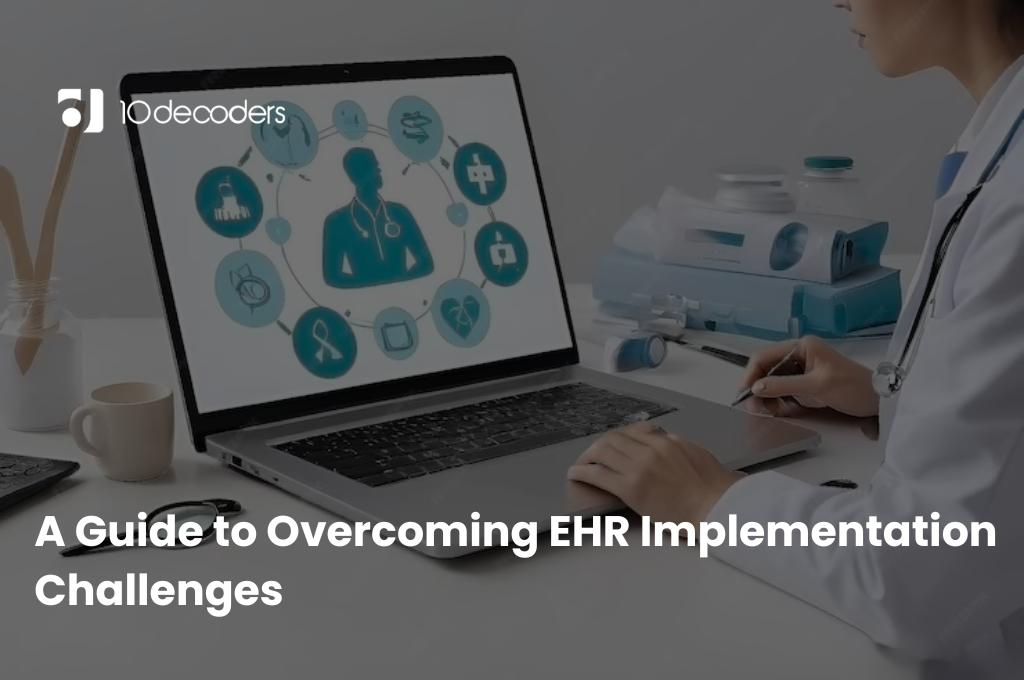A Guide to Overcoming EHR Implementation Challenges
Introduction
The healthcare industry has undergone a significant transformation in recent years, largely driven by widespread Electronic Health Record implementation. EHRs provide a centralized, digital means of managing patient information, improving efficiency, and delivering better healthcare outcomes. Implementing EHR systems presents numerous challenges that can complicate integration, disrupt workflows, and strain budgets. In this blog, we’ll explore how to overcome EHR implementation challenges in healthcare with actionable solutions.
EHRs- The Digital Backbone Supporting Safer, Smarter Healthcare Delivery
EHRs play a vital role in healthcare digital transformation, revolutionizing patient data storage and enabling real-time access to diagnoses, treatment plans, allergies, and lab results. As essential tools for hospitals and private practitioners, EHR systems contribute to improved health outcomes, reduced costs for patients and providers, minimized medical errors, enhanced diagnostics, and bolstered patient safety. EHRs facilitate better care coordination and promote higher levels of patient engagement.
Top Challenges in EHR Adoption and How to Address Them
1.Cost of Implementation and Maintenance
The most significant challenge in implementing an EHR system is the high cost. The financial burden comes not only from the initial setup but also from ongoing expenses such as software licensing, hardware upgrades, maintenance, and user training. For smaller healthcare facilities, this can be overwhelming.
To reduce costs, organizations can explore open-source EHR systems or opt for cloud-based solutions with subscription-based models. It’s crucial to apply for available government incentives or grants to alleviate some of the financial strain. Careful budgeting and financial forecasting will also ensure organizations are prepared for the long-term investment.
2.EHR System Integration and Data Migration
Migrating patient data from legacy systems to a new EHR can be a daunting task. Data is often stored in multiple formats and may be incomplete or inaccurate, making it difficult to ensure a smooth transfer.
Before migrating data, organizations should conduct a thorough audit of their existing data, ensuring it is accurate and up-to-date. Using advanced data migration tools or hiring external experts can facilitate the process and minimize data loss or inaccuracies. Ensuring interoperability with existing systems is also key to successful data integration.
3.Complexity of the User Interface
Many EHR systems suffer from cluttered interfaces and unintuitive designs, which can frustrate users and hinder efficient workflows. Healthcare professionals should not be spending excessive time navigating confusing menus when they should be focusing on patient care.
Organizations should prioritize selecting EHR systems with customizable, user-friendly interfaces. The system should align with existing workflows and be easy to navigate for all users. Allowing staff input during the selection process can also ensure the chosen system meets their needs and preferences.
4.Technical Infrastructure and IT Support
Implementing an EHR system requires a strong IT infrastructure that can handle increased demands on hardware, network bandwidth, and data storage. Insufficient IT support can lead to system downtime, slow performance, or a complete breakdown of essential healthcare services.
A thorough assessment of the organization’s current IT infrastructure is necessary to identify potential gaps. Investing in upgrades where needed and ensuring 24/7 technical support is available will keep the system running smoothly. Proactive monitoring and regular maintenance will also help prevent issues before they escalate
5.Data Security and Privacy Concerns
With EHR systems containing sensitive patient information, they are prime targets for cyberattacks. Ensuring the privacy and security of this data is paramount, not only to protect patients but also to comply with legal regulations such as HIPAA.
Implementing robust cybersecurity measures such as encryption, firewalls, and access control protocols will reduce the risk of data breaches. Healthcare organizations must train staff on best practices for data protection and conduct regular security audits to identify and resolve vulnerabilities.
A thorough assessment of the organization’s current IT infrastructure is necessary to identify potential gaps. Investing in upgrades where needed and ensuring 24/7 technical support is available will keep the system running smoothly. Proactive monitoring and regular maintenance will also help prevent issues before they escalate.
6.Interoperability and Information Exchange
One of the key benefits of EHRs is their ability to share information between different healthcare systems. Achieving true interoperability can be challenging, especially when organizations use systems with incompatible data standards or protocols.
When selecting an EHR system, organizations should prioritize those that adhere to industry standards such as HL7 and FHIR, which ensure better interoperability. Participating in Health Information Exchanges (HIEs) can also facilitate easier data sharing between providers and improve patient care continuity.
7.Compliance with Regulatory Standards
EHR systems must comply with a range of healthcare regulations, including HIPAA, Meaningful Use, and more. Failure to meet these standards can result in hefty fines and legal complications.
Healthcare organizations should create a dedicated compliance team responsible for overseeing the configuration of the EHR system to meet regulatory standards. They should stay informed of evolving regulations to ensure ongoing compliance and avoid costly penalties.
Continuous Improvement and System Optimization
EHR adoption strategies are not a one-time project; they require continuous monitoring and optimization. As healthcare needs evolve and new technologies emerge, organizations must ensure their systems remain up-to-date and effective.
Regular feedback from staff and patients is essential to identify areas of improvement. EHR usage analytics can also highlight inefficiencies in workflows that need addressing. Engaging in regular system updates and staying informed about best practices in EHR technology will ensure continuous improvement.
The Road Ahead
EHR implementation best practices have the potential to transform healthcare by improving patient outcomes, streamlining workflows, and enhancing data security. By addressing the hurdles with the right strategies, healthcare organizations can ensure a smooth transition into the future of digital healthcare.
In the end, the successful implementation of an EHR system is not just about adopting new technology—it’s about fostering a culture of innovation that prioritizes patient care and operational efficiency.



